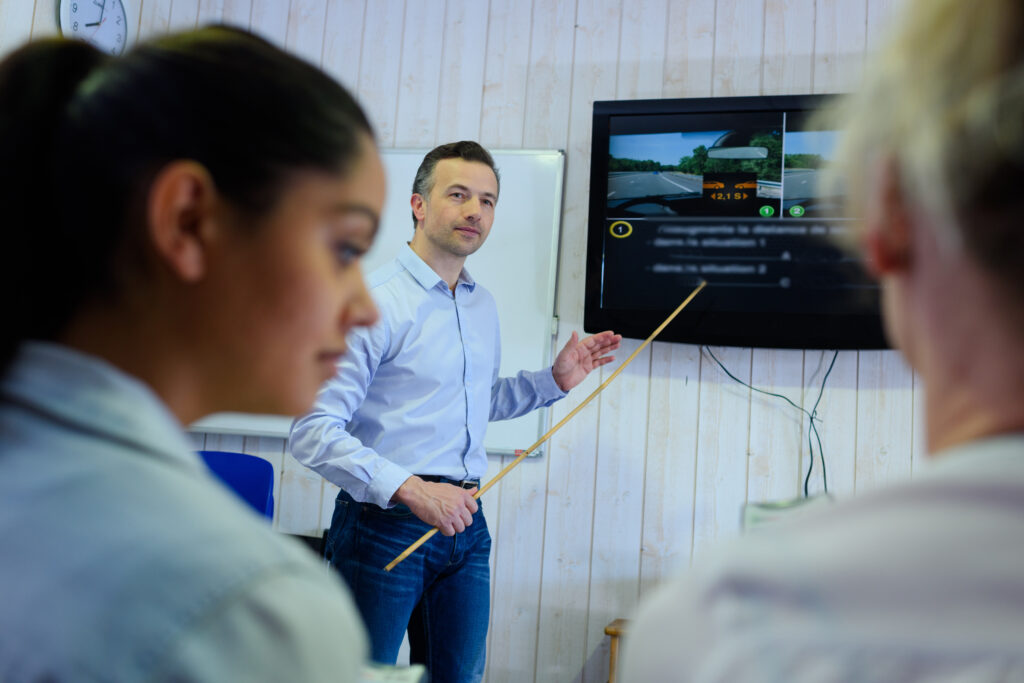HGV and LGV theory test: preparation
There are two parts to the driving test for a large goods vehicle (LGV): a theory test and a practical test. You must pass the theory test before you can take the practical test.
The theory test has two parts: a multiple choice part and hazard perception test. You don’t have to take both parts of the test on the same day but you must take them within two years of each other to get your theory test certificate.
The test is a really important part of learning to drive an LGV because when you get to your practical test you’ll need to show that you can use what you learn for this test when you’re driving on the road. It also forms Module 1 of your initial Driver Certificate of Professional Competence (Driver CPC) if you’re going to be driving for a living: see the CPC training page for more information.
It’s vital to prepare for your theory test; it may be a while since you last refreshed your knowledge of the rules of the road. The better prepared you are, the more likely you are to pass first time, which will save you the time and money that retaking the test will cost.

Preparing for the multiple choice test
The questions in the multiple choice test are taken from three books:
The Official Highway Code
The Official DVSA Guide to Driving Goods Vehicles
Know Your Traffic Signs
You’ll need to use all of these when you’re preparing. There are lots of products available that contain practice questions but it’s really important you don’t just learn the answers without understanding the questions fully because the questions on the actual test aren’t exactly the same as the practice ones.
To help you get used to how the multiple choice test looks on-screen, you can practise doing the theory test online with us.
The multiple choice test covers the following topics
vehicle weights and dimensions
drivers’ hours and rest periods
braking systems
the driver
the road
incidents, accidents and emergencies
vehicle condition
leaving the vehicle
vehicle loading
restricted view
essential documents
environmental issues
other road users
road and traffic signs.

Tips to help you learn
There are lots of tricks you can use to help you learn what you’ll need to know for your test. Here are a few ideas.
Link what you’re learning to your own experiences: for example, think about where you’ve seen an example of a road sign and use this to help you remember what the sign means. Use mnemonics: these are sayings or stories that help you remember something – for example, ‘Richard Of York Gave Battle In Vain’ reminds you of the colours of the rainbow (red, orange, yellow, green, blue, indigo, violet).
Practise the question formats: as well as knowing all the information, you’ll also need to know how the questions are asked in the test. Plan your study: set yourself some timelines and targets. This will help you to see your progress and make sure you haven’t missed anything. Plan to do your studying somewhere you won’t be disturbed and at a time when you’re fully awake. Get help: use friends, family, your driving instructor or your colleagues from work to ask questions and share driving experiences. Use the stopping distances game and road sign quiz to help you practise too.
Preparing for the hazard perception test
This part of the test checks you can recognise and respond to hazards that could happen while you’re driving. Being out on the road withyour instructor will help you prepare for this part. There’s also ‘The Official DVSA Guide to Hazard Perception’, an interactive DVD that will help you learn to recognise hazards, know what to do when you see a hazard and practise for the test.
In the test you’ll see 19 film clips, each shown from a driver’s point of view. You’ll need to spot the developing hazard in each film: this is something that might need you, as the driver, to take some action such as changing speed or direction. For example, a car pulling in to the side of the road ahead of you is a developing hazard because you’ll need to slow down and manoeuvre around it.
Other types of licences such as horsebox licenses and trailer licenses do not require you to undergo a theory test as part of the testing process. Contact us for more information on the licenses you require.
source: Safe Driving For Life








